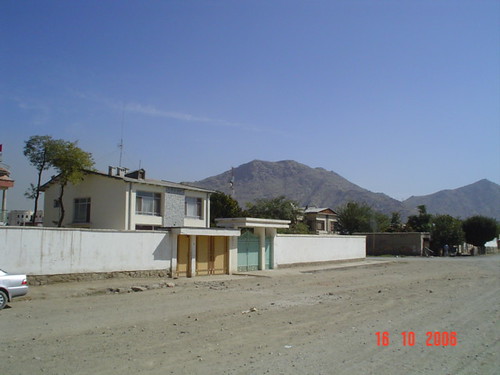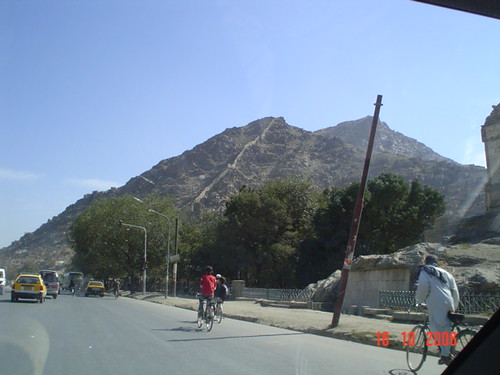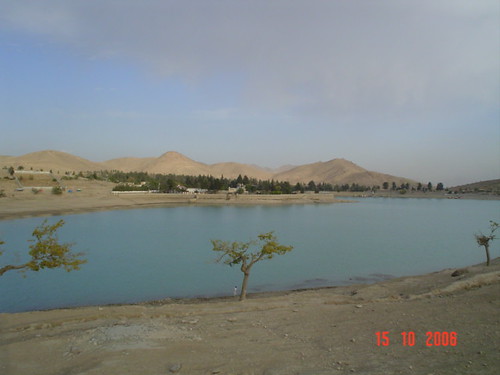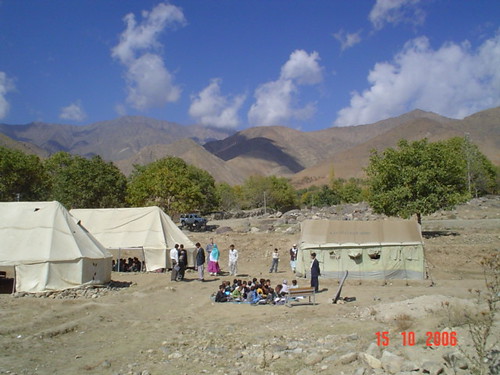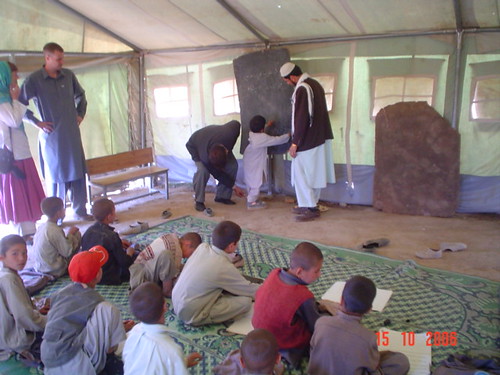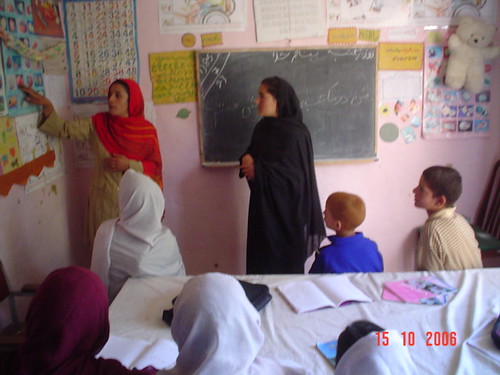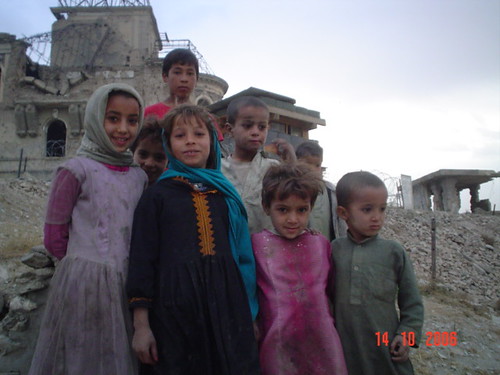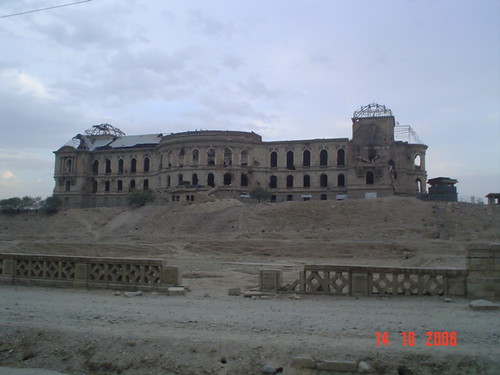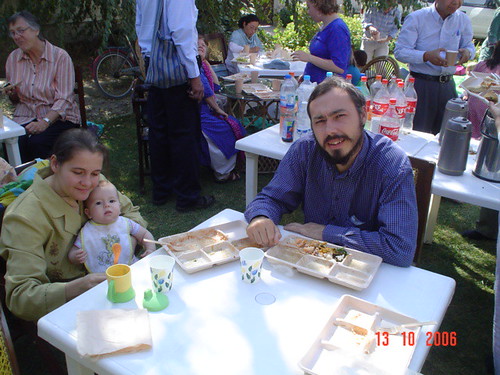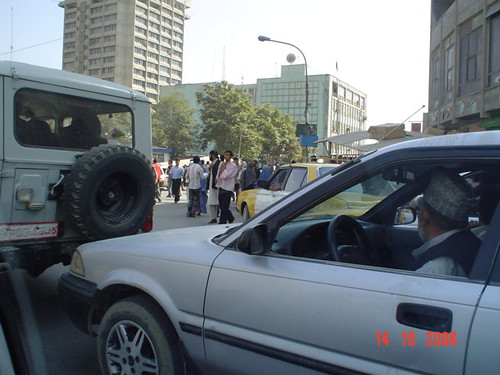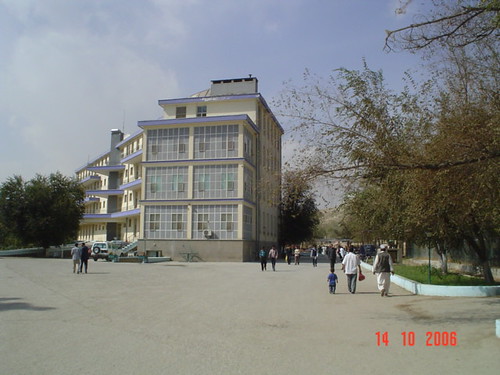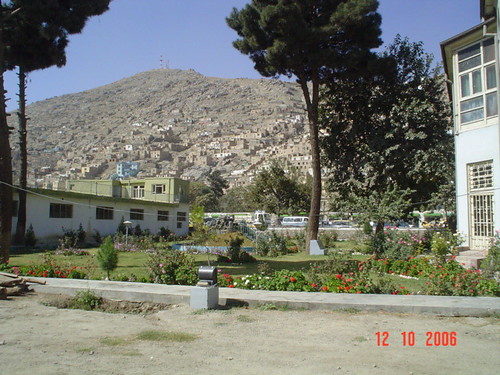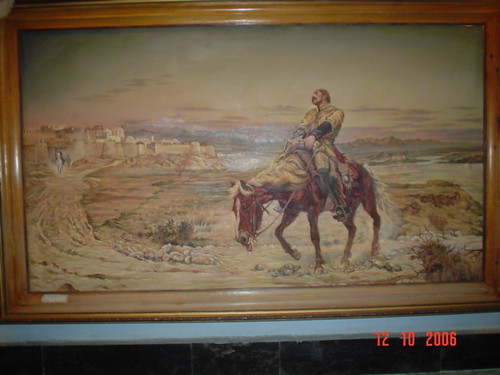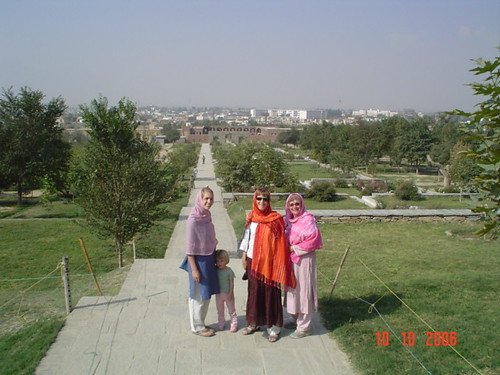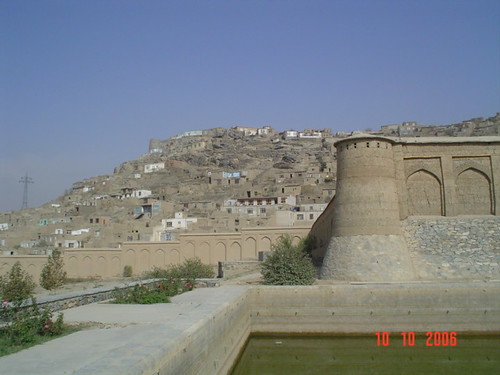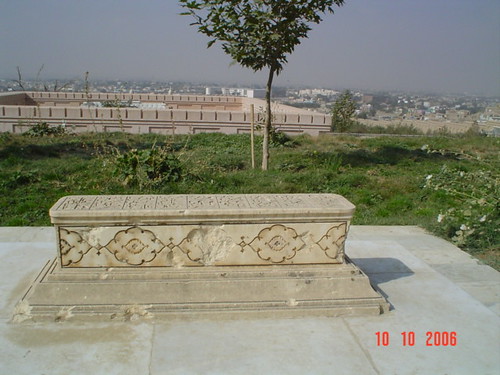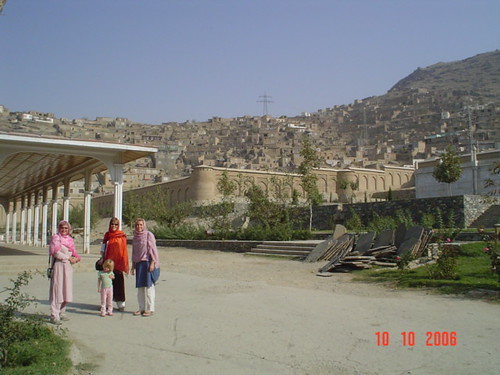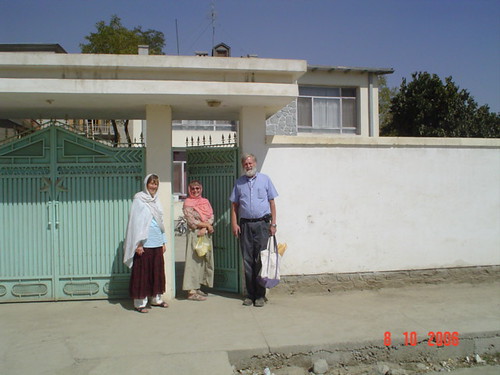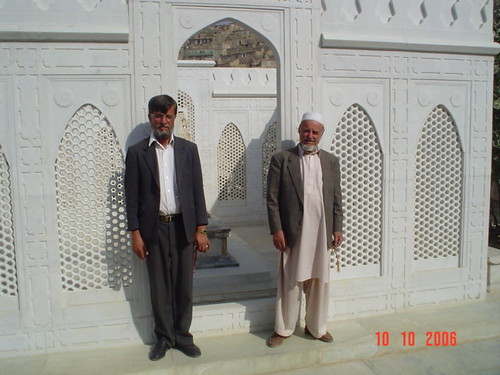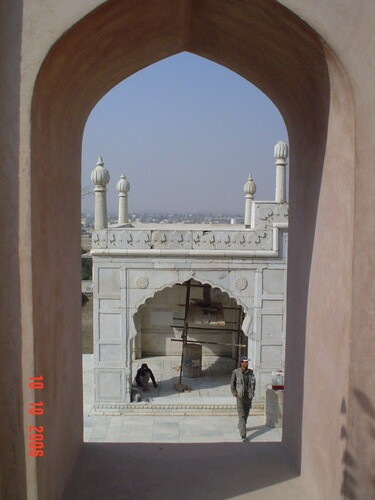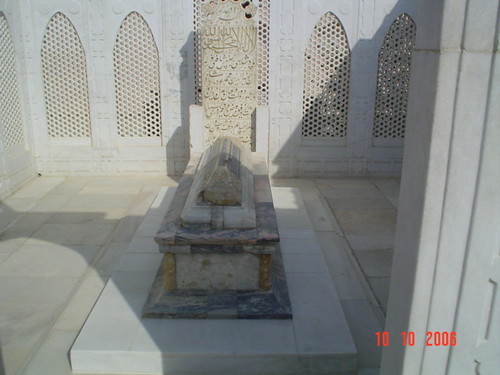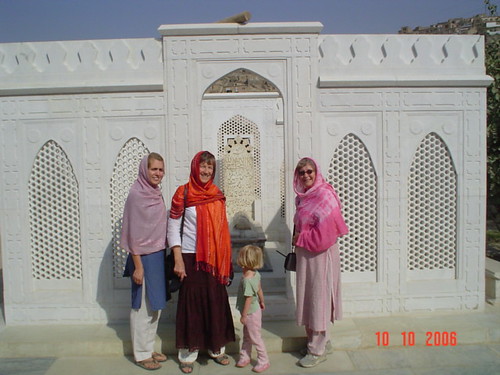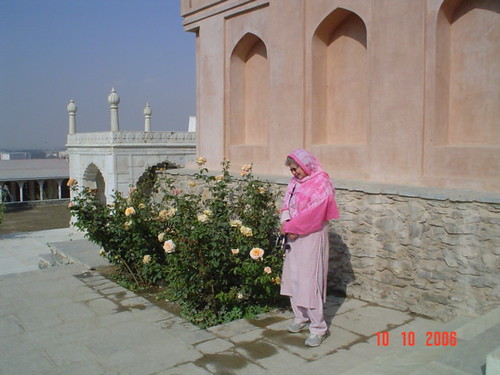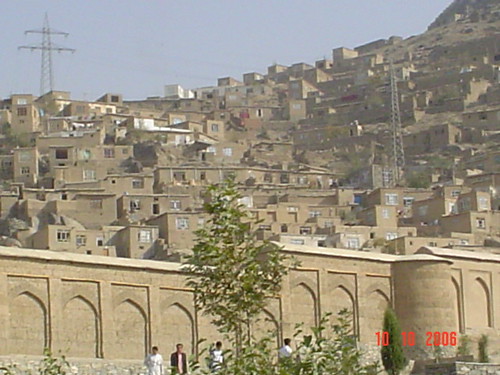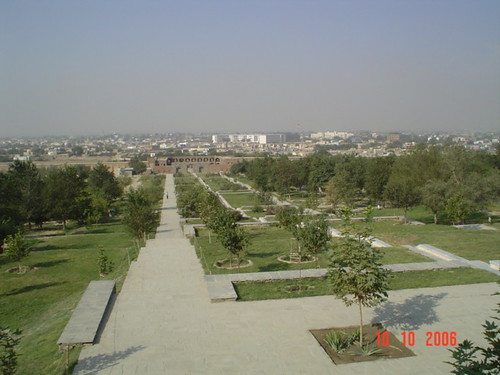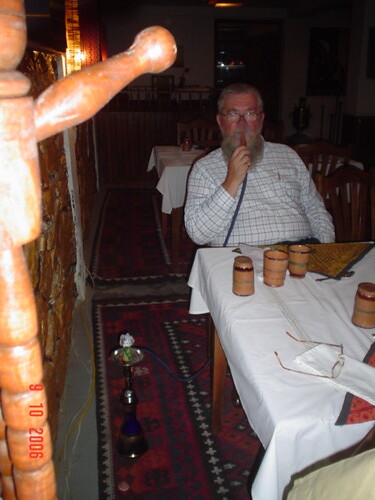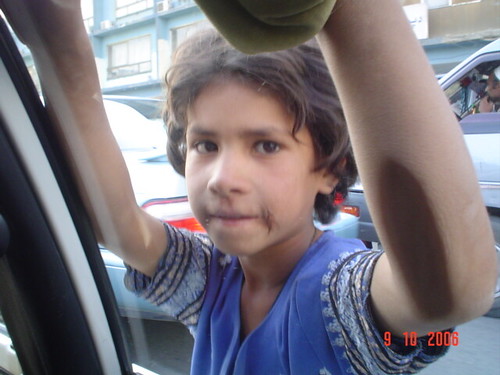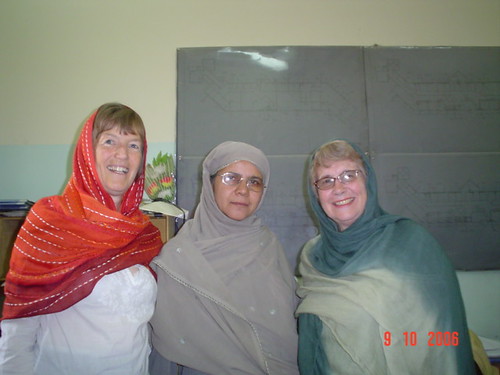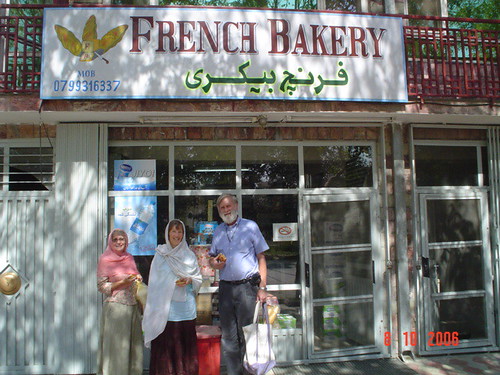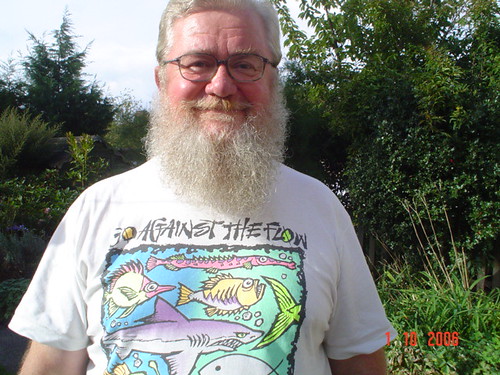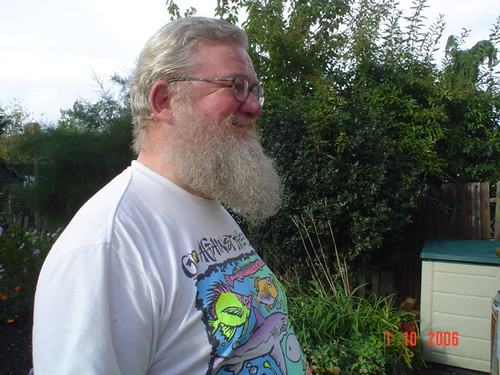Monday, October 30, 2006
Books read in October 2006 (17)
That modern science, capitalism and the freedoms of pluralist representative democracy arose under Western Christianity is beyond dispute. What is debated is why this should be and what did other cultures contribute along the way. How much is based on the inheritances from Judaism, Islam and classical Greek and Roman cultures. Stark makes a good case that it was a rationalism open to new discoveries in a world made by a sovereign God that led to reasoned progress. If a God who reveals himself as reasonable has created a reasonable world, man made in his image can work to discover how the world works.
When it comes to capitalism the author rejects Weber's famous link with Calvinism. This is where I suspect the Roman Catholic bias but I am not qualified as an historian to be certain of my criticism. Not to deal with Calvin on usury seems a serious ommision. Stark gives no reason for the dissapearance of the prohibition other than Catholics ignoring it. Stark cites medieval Italian cities as the birthplace of modern representative democracy but for a whole country he should have told us more about this side of the English Channel. He does though credit it us with better progress in commerce because of the absence of despotic government. Reviews on Amazon.com are sometimes critical because the writers are not in love with capitalism as is Stark. This is certainly a book to stimulate thought and debate.
2. The Great Game by Peter Hopkirk
I read this book while visiting Kabul. It taught me a lot of history I never learned at school. I never realised that Russia was a continual threat to British India and that the former USSR borders included many recent additions to Russian territory gained in the century before communism. I never knew that the Islamic republics, formerly Soviet ones, had been states which has ruthlessly enslaved Christian Russians.
This is a well written, gripping read. Only a person with a strong anti-im-imperialist bias could failed to be thrilled by the exploits of some young British men who spied for India, or of the Indians who travelled in disguise to map out unknown territories. No Christian could fail to be thrilled reading the story of Connolly who facing death or conversion to Islam, refused to renounce his faith and was beheaded in Bokhara.
Afghanistan is a major theme of the book. The British might conquer Kabul but they could not keep the country. To read of the one survivor out of a 16.000 strong force retreating from the first Afghan war is to read of one of Britain's worst defeats. But there ate stirring deeds winning VCs too.
This is history at its best. It shows people often do not learn from it.
3. The Chamber - John Grisham
Back in the deep South, Grisham is at his best. In fact this may be my favorite legal thriller. I believe he is a good writer when he can get a person who favours capital punishment (me) to sympathise with a man who is justly on death row. I am sure Grisham is against the death penalty as cruel and unusual. Though I believe it is the years on death row, not the execution that is cruel and unusual, Grisham makes his case very well and right to the end you are not quite sure what will happen.
Moral complexities are explored when the defense team uses very questionable methods to save their client. Grisham's Christian faith comes through in the very upright prison chaplain who leads the murderer in his repentance and to a hope in eternal life. It is a great portayal of a repentant racist killer and a lawyer who has real cause to fight for his client. This book also shows how evil really messes up different generations of a family.
4. The Pelican Brief by John Grisham
This is the first Grisham where the setting moves from the South to high affairs in Washington DC. I prefer the Southern settings but this is a good chase thriller though at times it seems a bit far fetched in the heroine's ability to escape assassins.. Why would she not run to the FBI earlier? But as usual with Grisham it is a good read though this time I do not see him making any serious points except perhaps it is hard to trust people at the top. I only gave four stars because he has written better books.
5. The Street Lawyer by John Grisham
Grisham often writes about the mendacity of lawyers who will do all they can to earn as much as possible, usually over-billing their clients. But here we have lawyers who have a conscience. The life of one greedy lawyer is changed for ever by contact with a deranged homeless man. He becomes a lawyer for the poor losing his wealth, his wife and almost his career. My one criticism would be that his ending is so nice as to be rather incredible. Nevertheless, you have to love the abilities of a great storyteller.
6, Dubai (Lonely Planet) by Lara Dunston
Good but as with all travel guides you need the latest edition and this one is a bit dated. Dubai is changing so fast you must keep up to date.I also prefer smaller size guides that will fit the pocket. Lonely Planet is a bit too large to carry especially when the temperature is ove 100 F. But if you plan to go you must do the Big Bus Tour. It is the best introduction to the city.
7. Skipping Christmas by John Grisham
Anyone who has asked, "Is Christmas worth it?" or been horrified by its materialism and excessive spending will love this book. Anyone who thinks it would be easy to get away from it all will here be warned. Skipping Christmas is not easy. The Kranks attempt is an hilarious disaster with a wonderful twist and a delightful ending. Just the book to give before the festivities. I have now read the complete works of grisham in two months. It has been a real pleasure to find a Christian writer of such talent.
8. Becoming Conversant with the Emerging Church: Understanding a Movement and Its Implications
by D.A. Carson
Don Carson has written an excellent critique of post-modernism and its appearance as the Emerging Church. He writes as a theologian giving a critique which may be hard going for the average Christian but one which well repays the effort in reading. I believe this is a generous, fair yet devastating critique. He shows the strengths and weaknesses of the Emerging Church in reading contemporary culture and its commendable desire to reach post-modern people. I believe Carson gives us an excellent critique of post-modernism and shows why the Emerging Church has gone more down a route of syncretism with post-modernism The books of McClaren and Chalke are well critiqued in their departure from biblical orthodoxy. The conclusion is the Emerging Church should be handled with great caution. It is a departure from evangelical Christianity. If you are drawn to Emerging Church you must read Carson's critique. It is also a book which gives an excellent critique of post-modernism in general. Carson believes it is a spent force academically but it seems to me to be an increasing one in popular culture.
9. The Indypedia part 1 - Edited by Richrd Askwith
I picked up this freebie which someone had purchased with their Indepenent newspaper and then discarded. It does indeed give facts and figures of modern life but some, like homosexuals are 6% of the UK population, one has reason to question. Christianity has no mention save under C of E which is a smaller section than Islam. Too much on celebreties and the EU but nevertheless fun to browse. Can anyone lend me a copy of part 2?
10.- 17 Childrens books read to my granddaughters
Bedtime Rhymes
Playtime Rhymes
Funtime Rhymes
The Trouble with Jack - Shirley Hughes
An Evening at Alfies - Shirley Hughes
Mog the forgetful cat - Judith Kerr
Bible Friends: Who Says That?
Tell the Time with Postman Pat - Alison Green
Once they get you reading they do not want to stop!
Friday, October 27, 2006
Destination Kabul
This is where we stayed with our friends. The strret is wide and unpaved.
If you click on this or any of the photos of our visit, you will be taken to the Flikr url where there are more photos and comments on our eleven days in Afghanistan.
City of Hills
Kabul is surrounded by hills and has one in the middle of the city too. On this hill you can see the line of an ancient defensive wall.
Tourist Resort
This reservoir is being developed as a resort. Down the valley is the country's only golf course where greens are brown.
Tented classroom
No desks but thisphysically handicapped boy shows us he is integrated into mainstream school.
Thursday, October 26, 2006
Blind boy
We visited a village outside Kabul to see how the handicapped are being helped. Project supervisor with blind youth writng braille. The botjgoes to a local mainstream school.
Children in the ruins
As we went to photograph the ruins we found we had an audience.
War damage
http://www.pbase.com/qleap/image/1061131 to seAfghanistan, holidaye what it looked like before the fighting.
Darulaman Palace
The Darulaman Palace was built in the 1920s by former King Amanullah Khan as part of his plan for social and political modernization. It originally was intended to house Afghanistan's first elected parliament. But before that legislature could be created, Amanullah Khan was forced into exile by conservative Pashtun tribesmen who opposed his reforms.
The bombed-out ruins of the Darulaman Palace tower over the landscape to the south of Kabul. Sitting on a hilltop with its pockmarked portico balconies and Corinthian columns, it is a postcard image that has come to symbolize the destruction of Kabul during the civil wars of the 1990s.
Long before it was gutted in the early 1990s, the Darulaman Palace had been a symbol of a different kind.
When it was designed in the 1920s by European architects, the structure was meant to symbolize King Amanullah Khan's plans for democratic modernization -- plans that ultimately failed when Islamic conservatives led a series of uprisings against him in late 1928 and he fled to Europe.
Economy Minister Mohammad Amin Farhang said the Afghan government wants to restore the three-story building to its classical European grandeur so that after more than 75 years, it finally can be used for its original intended purpose.
"The Afghan government has decided that Darulaman Palace should be prepared for the Afghan parliament because, during the time of Amanullah Khan, the building was built for democracy," Farhang said. "And now, this palace should be used for democracy."
Many Afghans today are unaware of Darulaman Palace's significance as a symbol of modern democratic aspirations.
The country's first written constitution was promulgated by Amanullah Khan in 1923. It guaranteed personal freedom and equal rights of all Afghans. It also called for provincial councils to be created across Afghanistan with half of all members winning their seats through elections.
In his drive for modernization, Amanullah Khan established diplomatic and economic relations with major European and Asian states. He founded schools where classes were taught in French, German and English. And he built a new town to the south of Kabul -- named Darulaman, or "Abode of Peace" -- as Afghanistan's new administrative center.
Construction of his monumental Darulaman Palace for a future parliament was just part of the project. A structure for Kabul's municipal administration also was built nearby. A narrow-gauged railroad led to the center of Kabul about 10 kilometers away. Smaller government buildings and residential villas also were built for members of a newly established judiciary and for high-level government officials.
But the high cost of modernization -- and the king's efforts to reduce the power of Islamic clerics -- caused resentment among conservative Islamists and Pashtun tribal leaders.
The reformer king faced a series of tribal uprisings after he introduced reforms in the summer of 1928 that allowed women to be seen in public without head scarves or the all-encompassing burqa. At the beginning of 1929, just six months after announcing those reforms, Amanullah Khan was forced to renounce the throne and flee across the border into British Colonial India.
Darulaman Palace was destroyed when rival mujahedin factions fought for control of Kabul during the early 1990s.
With Amanullah Khan's downfall, Darulaman ceased being the Afghan capital. The municipal building eventually was converted into the Kabul Museum, whose ancient collections were looted in the early 1990s by militia factions and vandalized in the late 1990s by the Taliban regime.
Darulaman Palace was first gutted by fire in 1969. It was restored to house the Defense Ministry during the 1970s and 1980s. But it was destroyed again as rival mujahedin factions fought for control of Kabul during the early 1990s.
Today, parts of Darulaman Palace are used by NATO troops as an observation post.
Afghan officials say laws on the protection of Afghanistan's national heritage make it their duty to protect the historical identity of Darulaman Palace. They also say that moving the parliament to Darulaman -- which is now a district of the capital -- will help alleviate chronic traffic jams in the city center. But they say funds for the reconstruction must come from private donors rather than the cash-strapped state budget.
http://www.rferl.org/featuresarticle/2005/04/1aa388c3-a4bc-45da-af8b-44d88e888640.html
From Kazakstan
Vlad, a physics lecturer, with family, the first people I have met from Kazakstan. We all enjoyed an excellent Korean lunch with the obligatory kimchi.
Grid-lock
Nothing short of an aerial photo from a helicopter could convey the chaos that is traffic in central Kabul. Three lane carriageways with no lane markings, pedestrians everywhere, beggars and squeejie kids. The odd vehicle doing its very own contraflow. Bicycles doing this on roundabouts where there is no apparent rule as to who should give way. All roads go through the centre and it is GRIDLOCK.
Wazir Akbar Khan Hospital
Elliot teaches post-graduate doctors internal medicine here. The empty space is because security stops vehicles at a distance. It is a government orthopaedic hospital helped by Loma Linda, a Californian hospital. The pharmacy was stocked with U.S.A.I.D. drugs.
Open for lunch
During Ramadan restaurants are closed during the day but we found this pizza place serving non-Muslims.
National Gallery Gardens
I was surprised to find the national collection had next to no Islamic art in the form of calligraphy. The paintings are Western style representational art by locals or expats. We were the only visitors at the time so had our own personal guides to show us the collection.
Taliban Art Appreciation
As well as firing artillery to destroy ancient buddhas, the iconoclastic Taliban decreed that all art representing living beings be destroyed. Fortunately the staff of the natioanl gallery were forewarned and hid as many pictures as they could. These on display in this case were not hidden but torn up by the Taliban's art appreciation society who told the staff to burn them. Rags were burned instead. So here we have a showcase of what happens when the Taliban visit an art gallery.
The Remnants of an Army
Doctor William Brydon was an unknown assistant surgeon with the British East India Company in 1842, when he suddenly became one of the most famous figures of the early Victorian era and the subject of a much-reproduced painting. In January of 1842 a British and Indian force, following a two-month siege in Kabul and the killing of the British representative, began a withdrawal towards the Khyber Pass and Peshawar in British India. On January 6, 1842, some 16,500 British and Indian Sepoy troops, civilians, wives and children, and camp followers left Kabul. On January 13, Dr. Brydon rode, alone, up to the gates of Jalalabad.
The legend notwithstanding, Brydon was not actually the sole survivor of the 16,500, but he was the only European to make it all the way from Kabul to Jalalabad (about 90 miles through snow-covered passes and through hostile tribesmen). Other Indians and friendly Afghans also straggled through, and over 100 British officers, enlisted men, wives and children were taken captive or hostage and later released or exchanged. But the image of Brydon riding alone into Jalalabad, sole remnant of a column of 16,500, burned itself into Victorian memory, aided by a dramatic painting by the Victorian military artist Lady Butler (above), called "Remnant of an Army".
www.theestimate.com/public/100501_dossier.html
Doctor Brydon's Ride: Lady Butler's Remnant of an Army , my photo of the copy in Kabul Art Gallery. The original is in Tate Britain. www.tate.org.uk/servlet/ViewWork?cgroupid=999999962&w...
Wednesday, October 25, 2006
Don't they look good?
The ladies say they are not keen on havng to wear culturally appropriate dress. I think they look very good in it. It is attractive.
Tuesday, October 24, 2006
From Babur's Garden
In the distance, horizon left of centre, is a tower built as part of the city's ancient defensive walls.
Civil war damage
This tomb shows how the civil war damaged the gardens. There are many bullet holes.
In Babur's Garden
This is perhaps the best tourist attraction here. Babur was the first Mughal emperor who invaded India from here. Kabul was his favorite place and he was buried here.in 1530. The gardens were destroyed in the early 90s in the Mujahadeddin civil war was fought in Kabul after the Russians left.
Kabul House
Houses for the well to do are guarded by large gates, walls and a gatekeeper. VIPs have armed guards.
Monday, October 23, 2006
Ladies of Kabul
These two ladies came to the house to sell us souveneirs They had made. I asked if I could take their photo and they agreed providing they could be veiled. Usually they are veiled whenever they venture out. Katy says the veil is impractical as it acts like a horse's blinkers so women are forever bumping into you in the market. This might be defeating its purpose :-)
Sunday, October 22, 2006
Final Kabul diary
Tuesday morning we said farewell to the family in Kabul and after lunch Mark sent a driver to take us to the airport. This man had a permit to park close to the terminal and enter it but before we could get into the terminal we were told the flight was cancelled,. We were to return at 6 the next morning for a 8 am flight. So it was back to, the family for another night. In the evening we had a very good house-group and dinner with Marty and Elliot's colleagues and it was so good we did not feel our delay had been in vain.
Wednesday morning Elliott took us to the airport after we rose at 4.30. By 6 the road close to the airport was jammed. Katy and I took the cases and walked to the first security check where cases were being opened and examined. This was before the terminal building. I do believe there was some unofficial ethnic profiling. We, the only Europeans in the line were waived through bags unopened.
The rest of the story in the terminal was not good. several men wanted to help then demanded "baksheesh". This included porters and soldiers, one of whom expedited payment of departure tax . Then we had to pay to have cases sealed with plastic straps. I do nor know how much I doled out in total but it disposed of all my local currency plus some dollars and EAU dhirams. We were due to leave at 8 but took off at 9.30. No delay was announced and before we boarded a policeman said we had no departure stamp so a soldier took us back to get it. At least this proved departure was delayed so we may be able to make an insurance claim.
It was a 2 and a half hour flight to Dubai, all over differing kinds of brown deserts, plus the Gulf.. Ariana Airlines served the worse apology for breakfast we have ever been served. Dubai immigration was slow. Taxi to our hotel then we confirmed our desert safari trip. 4 to 9 we enjoyed a hair raising landcruiser trip in the desert. local driver did his best to scare us with a roller coaster ride in the dunes. A Nigerian couple were our other passengers but there were many 4WD vehicles on the route. We saw a camel farm, desert sunset then has a barbecue in the desert too. This included hubble bubble pipes but the belly dancing was cancelled due to Ramadan. It was hot and I was not comfortable.
Back at the hotel i did enjoy seeing the closing over of the W Indes defeating the Aussies in India.
Thursday morning we took a bus tour of Dubai on converted London open double deckers. You can hop on and of these as they do two routes with buses half an hour apart. Included in the ticket was entry to Dubai museum and an hour's cruise on the creek where we saw many tradition dhows which trade with Iran.
We broke our bus riding to check out of our room. have lunch and put cases in storage at the hotel. Then more bus riding to see the Burj El Arab, the world's only 7 star hotel. The beach was beautiful and the scale of nearby building work absolutely breathtaking. We had not believed it when told earlier that one fifth of the worl'd construction cranes were in Dubai. Bur seeing the scale of construction which makes the new Wembley stadium here us look like a drop in the bucket, we do believe the crane story. next we shopped for souvenirs and sadly misplace the bag with my camera. So all my images of Dubai are lost but we hope that our friends who copied our Kabul shots will be able to help us out .
In the evening we had booked a dhow dinner cruise . it was excellent around Dubai creek but it left us pushed for time, especially when the hotel look about half an hour to produce a driver for their courtesy car to the airport. Instead of checking in 3 hours before 1.10 am departure we got out the airport with only an hour to go to take off. We were last in a short queue with a notice saying the gate should be shut on us. But it was not as we found out later that the flight had had head winds from Brunei so was half an hour late landing. However the rush meant no shopping before boarding. We had a good light to London. landing 6.30 am with gratitude to God for his protection over our Afghan adventure.
Thank you too for your prayers.
Now we find Perivale at Diwali makes nights in Kabul seem quiet.
Fireworks
Thursday, October 12, 2006
Babur's Garden from the Pavillion
According to researchers, the Bagh-e-Babur gardens were laid out between 1504 and 1528. They were damaged by an earthquake in 1842 which ruined many parts of Kabul. The gardens were restored by the Afghan ruler Amir Abdur Rahman in the late 18th century and again by King Nadir Shah in the 1930s.
But both men were influenced by European gardens and the Islamic tradition of the garden was ignored. Later the gardens became a public playground with the construction, during Communist rule, of a swimming pool.
A multi-year renovation project will restore the shrine and mosque according to their original design, and if feasible the pavilion, which was severely damaged, then partially restored. Neighbourhood residential dwellings will be rehabilitated, and the gardens replanted with trees, flowers and other ornamentation appropriate to Moghul tradition.
portal0.unesco.org/en/ev.php-URL_ID=6655&URL_DO=DO_TO...
Hubble Bubble
Enjoying a local pipe, post-prandial in an Afghan restaurant. I chose a mint flavour. I believe it is herbal, not the cancerous weed.
Squeejie girl
She walked along rubbing the windows as we negotiated dense traffic She looked under 10.
Kabul diary 4
Today is the start of the weekend here as Friday in an Islamic country takes the place of our Sunday.
Mark,Sue and the girls took us to the National Gallery this morning. We were the only visitors so were shown round by two guides. What surprised me was it was just about all paintings, no Islamic calligraphy. The pictures were by local and expat artists. Some showed signs of damage as they had been taken from their frames and hidden to escape the iconoclasm of the Taliban who destroyed all representations of living creatures. There was a case full of torn up pictures which the staff had failed to burn as instructed. My favorite picture, later to appear on my blog was of the sole British survivor riding injured into Jelalabad after the first Afghan war 130 years ago.. 16,000 left Kabul. He alone survived from the British army that had taken Kabul
We enjoyed a pizza lunch at a cafe open for non-Muslims only during the day in Ramadan. We had planned a picnic in the country but our hosts decided it was not a good idea in the fast time.
Tuesday, October 10, 2006
Kabul diary 3
Yesterday I completed the working day (till 3pm) at Elliott's hospital which is a co-operative venture between an American Adventist University, US-AID and the Afghan government. A saw the pharmacy stocked with medicines donated by the USA. There are many NGO's here and much western aid. All Elliott's students are post graduate doctors. It is an orthopaedic hospital but he teaches internal medicine. I met one of his students who had just come in from the presidential palace having been asked to be physician to the president. I do not know if that is a request he can refuse but he said he wanted to as it would take him away from hospital work.
Katy spent the afternoon with Marty teaching Elliot's students to improve their English. In the evening we took the Larson's out to eat at an Afghan restaurant. It was good. The menu was priced in dollars and it worked out at about 10ukp each including my use of a hubble bubble pipe for the first time. I smoked sweet mint herbal tobacco (no nicotine)
This morning we went to the Babur's Gardens. He was the first Mughul emperor in the early 16th century. Kabul was his favorite city and from here he invaded India and here he made his pleasure garden where he is buried. The gardens were almost destroyed in the civil was of the early 90s but are now being largely with money from the Agha Khan. Photos will appear on the blog later.
Monday, October 09, 2006
Is the Church of England waking up to reality?
Kabul Diary 2
I think my day started at 4.15 with the call to prayer from a nearby mosque. I could also hear to congregation praying. Being Ramadan there would be many there. So I said my prayers in bed not mosque and tried to get back to sleep.
7am a car arrived to take Elliott to work. Kabul looks very like Kano but we did one thing we could not have done in Nigeria. I changed money for local currency at a street vendor who had piles of notes on his little stall. One thing more in evidence in Kabul is the military, their own and UN soldiers. The later merely drive through on patrol and do not stop. They are all NATO soldiers. Our boys are in the south. We flew over the conflict provinces on our way here yesterday.
Jack Straw take note, so far I have spotted only three fully veiled Afghan women. I think the debate should shift onto who we would prefer to have veiled, and not only women. Red Ken and Prescott for example? But I digress.
At the hospital I have been meeting Elliott's Afghan and expat colleagues. I went on a ward round with his students but they only had one new admission, a possible case of poisoning by pesticide.
Kabul Diary 1
We left Heathrow on Royal Dubai, a plane full of people very few of whom left the flight at Dubai. Most were going to the far east or the antipodes. It was a 7 hour flight. Proceeding to Dubai baggage claim I heard a welcome sound, Hausa, and greeted two men from Kano. A pleasant Arab lady immigration officer gave us visas for UAR, we got our cases and asked how to find terminal 2. The answer was pay 7 ukp to have a taxi take us round to the other side of the airport. Fortunately we had bought the local currency in Finchley. This was 3 to 4 in the morning and we had to check in for the Ariana Afghan Airlines flight leaving 6.30 am. Most passengers were Afghan men, few females, plenty of European males but Katy the only white female on a half-full airbus that took 2 and a half hours to dusty, brown Kabul under its circle of hills. We were pleasantly surprised to get drinks and breakfast in daylight during Ramadan while in the air.
Elliott was a little late picking us up and it was getting hot. They live on the other side of the city so we saw something of Kabul and the delights of local traffic. It is reminiscent of Kano in many ways, when the dust blows down from the Sahara. Sunday is a working day. Elliott had already finished some night work at the hospital. His son's Mark and Carl were at the SERVE office. Mark's girls were at school. His mother Marty and wife Sue were at home to welcome us. We strolled out to buy bread from an Afghan run French bakery.After lunch we slept then had drinks at a newly developed facility where locals and expats can meet, eat, drink and access the Internet. After dinner Sue and I are on laptops emailing, the brothers plying computer games, the children in bed and the rest of the adults watching Mansfield Park on DVD. Electricity is from their own solar cells charging 12 volt accumulators which is then transformed to mains.
Photos later I trust.
Thursday, October 05, 2006
Voting Intentions
Sunday, October 01, 2006
October Beard
Katy wants me to have a drastic cut, but "No way until after Christmas", say I. So what has she done here but chop the hair from the top of my head! When I pointed this out, her reply was to the effect that I had asked for a photo of the beard. Oh the joys of marital communication!
